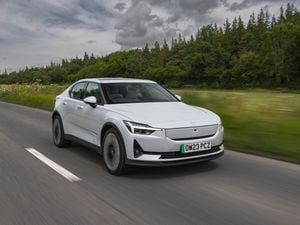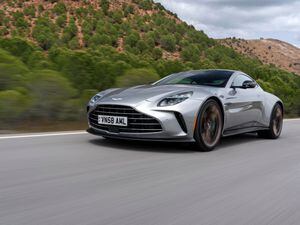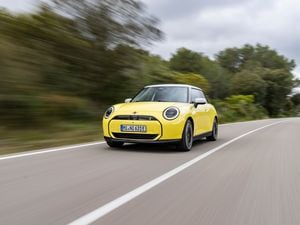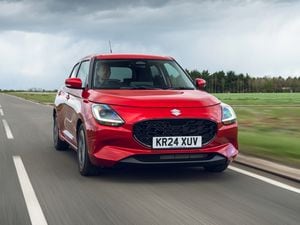First Drive: Is the new, longer-range Polestar 2 worth considering?
Polestar has given its executive electric car a comprehensive makeover for 2023. James Batchelor has been behind the wheel.

What is it?

It’s fair to say the Polestar 2 was the first car that really took the fight to the Tesla Model 3 when it launched in 2020, and in some respects soundly thrashed the American colossus and trailed it in other areas. It’s been popular though; while nowhere near the levels of the Tesla, the Polestar 2 has clocked up 100,000 sales worldwide since its launch, 17,000 of which were here in Britain, and has neatly put the Swedish electric performance brand on the map.
In the premium electric executive car market, though, the pace of change is frantic, and Polestar has comprehensively updated its sales hit for 2023 with a particular focus on efficiency.
What’s new?

You won’t find much on the outside to distinguish the new 2023 car from its predecessor – more on this later – as Polestar has been busy overhauling the things you don’t see but are really important.
There are larger 69kWh and 82kWh batteries and some really significant driving range and charging speed updates – up to a claimed 406 miles and 205kW DC is now possible, which means the 2 can travel significantly further (in Long Range Single Motor spec) than key rivals including the Tesla Model 3. It’s only the £105,000 Mercedes-Benz EQS electric limo betters the Long Range Single Motor’s range. All models have had a boost with even the entry-level Standard Range Single Motor managing 331 miles on a full charge.
What’s under the bonnet?

Polestar hasn’t stopped there with the changes though, as just like the refreshed Volvo XC40 and C40 Recharge SUVs (on which the Polestar 2 is based), the 2 has switched to rear-wheel drive. Powering the rear wheels is a more efficient inverter and motor, which also brings a hefty power increase.
Our 82kWh Long Range Single Motor test car now packs 295bhp – before it had ‘just’ 228bhp – while the Long Range Dual Motor gets a bump of around 13bhp to 416bhp. The latter features a second motor on the front axle, although Polestar keenly points out the Dual Motor version is ‘rear-biased’ and ‘even more fun to drive’. The entry-level Standard Range makes do with a 69kWh battery and 268bhp.
What’s it like to drive?

So Polestar has changed quite a lot with its breadwinner then, but get behind the wheel and all those stats and figures just melt away. We drove the Long Range Single Motor and came away feeling that the new 2 drives almost identically to the old one. There’s still strong performance on tap, high grip levels and good steering feel, and while the switch to rear-wheel drive does make the car seem slightly sharper to drive, we’d guess most buyers won’t notice. For the most part the Polestar 2 remains a quick and accomplished car.
There is a but: our car’s 20-inch wheels give a firm ride and one that’s noticeably stiffer than a Tesla Model 3’s or even a BMW i4’s. The suspension also has a tendency to translate any thumps straight into the cabin in a very audible fashion. It’s by no means a deal breaker, though – the 2 is a very enjoyable car to drive.
How does it look?

Very similar to the old car, frankly. Polestar has ditched the old car’s fake grille and replaced it with a ‘SmartZone’, which neatly hides away the car’s front-facing camera and radar behind a body-coloured panel, and brings the 2 in line with the new Polestar 3 SUV.
It’s a small change but that’s no bad thing as the 2 still looks razor sharp like you’d expect from a Swedish car brand. There are some new alloy wheel designs, too
What’s it like inside?

We think the 2 probably has the best interior in its class, with its focus on strong design and ease of use. Polestar saw no reason to change things for change’s sake, so there’s still the same great driving position and a lovely use of different materials to give a real quality feel.
What has been improved, though, is the Google-based infotainment system with some of the niggles found in the original car’s now ironed out – it’s a very easy and intuitive system to use now.
Space in the back, meanwhile, is average and the panoramic roof (part of a £4,000 ‘Plus pack) is a desirable option as it makes the rear seem larger than it really is. The hatchback boot makes loading items easy and the partitioned boot floor prevents items from rolling around.
What’s the spec like?

There are no trim levels as you’ll find with many other executive cars, just a standard specification with a handful of option packs available which bundle together features like an upgraded stereo, panoramic roof and extra safety equipment. So, as standard, there’s a 11.2-inch central touchscreen, a 12.3-inch digital driver’s display, heated front seats, a powered tailgate and 360-degree cameras.
Prices start at £44,950 for the 69kWh Standard Range Single Motor, and rise to £48,950 for the 82kWh Long Range Single Motor and £52,950 for the Long Range Dual Motor. The Long Range Dual Motor Performance Pack, with its stiffened chassis, tops the range at £57,970.
Verdict
Polestar says it ‘doesn’t do facelifts’ and prefers not to follow other carmakers in lightly updating cars and instead focuses on the tangible benefit to customers. The new 2 is evidence of that thinking, because the changes to the car’s hardware will really matter to those wanting a posh electric executive car.
The Polestar 2 was already a desirable electric car with its stylish design, high levels of tech and quality interior – now it’s even better.





